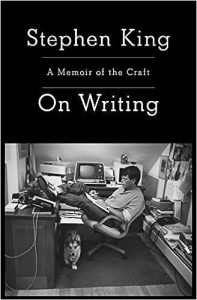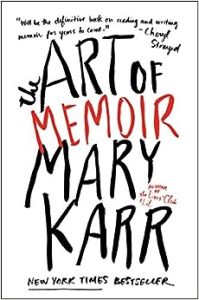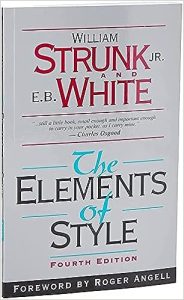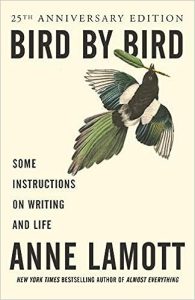What is a better way to learn how to write a bestseller if not from seasoned and published authors? Many internationally recognised writers have shared their insights on performing research, structuring the argument, creating a strong authorial voice or choosing the most effective wording. This post will look at the best books on writing non-fiction written, which provide practical recommendations to anybody looking to write a non-fiction book.
Best books on writing non-fiction
On Writing: A Memoir of the Craft by Stephen King

Stephen King is famous for his horror, supernatural, suspense and fantasy novels and their acclaimed big-screen adaptations. He also penned On Writing: A Memoir of the Craft, considered one of the best books on writing non-fiction. King discusses his personal experiences and writing journey, providing a unique viewpoint on writing. Furthermore, King shares his perspective on storytelling, character development and the value of rewriting. Fiction and non-fiction authors will find On Writing insightful and inspirational. Still, King’s advice on the need for honesty and authenticity in writing may resonate especially with non-fiction writers.
The Art of Memoir by Mary Karr

Mary Karr’s book is a must-read for those interested in writing a memoir. Karr, a famous poet and memoirist, discusses subjects like memory, truth and the power of narrative. In her books, The Liars’ Club, Cherry and Lit, Karr is not afraid to portray trauma, sexual abuse, substance use disorder and mental health conditions. In the same vein, The Art of Memoir exemplifies the transformational power of writing and value of sincerity in constructing narratives. Thus, non-fiction writers will find Karr’s advice on creating one’s voice and managing the difficulties of self-examination instrumental in constructing deeply touching, emotional and brutally honest memoirs.
The Elements of Style by William Strunk Jr. and E.B. White

The Elements of Style is a classic reference handbook that every writer should know. Strunk and White’s timeless counsel have trained generations of authors on clarity, brevity and accuracy. William Strunk was a professor of English at Cornell University, and E. B. White was a student in Strunk’s English Usage and Style class and later a writer and contributor to The New Yorker. You will recognise E. B. White’s name as the author of Charlotte’s Web and Stuart Little.
This practical textbook outlines the essential elements of writing clear, correct English and is a must-have for authors looking to improve their writing skills. The Elements of Style may help effectively explain their thoughts while ensuring the text is easy for the readers to follow. Moreover, non-fiction authors can benefit especially from the emphasis on clarity and succinct phrasing, which often characterise non-fiction writing.
Bird by Bird: Some Instructions on Writing and Life by Anne Lamott

Bird by Bird by Anne Lamott is an easy-to-read and funny overview of the writing process. Anne Lamott is an American non-fiction writer and novelist renowned for her self-deprecating humour and honesty, touching upon such subjects as alcohol use disorder, mental health conditions and motherhood.
Bird by Bird will appeal to authors of many genres. It urges writers to embrace their flaws, overcome self-doubt and find peace in the process of writing. Lamott gives tremendous on character development, building voice and the necessity of perseverance via personal experiences, all sprinkled with humour and anecdotes. Bird by Bird is a must-read for aspiring non-fiction writers because of Lamott’s sensible approach to writing. Her insights on the joys and tribulations of the writing life bring comfort and incentive to non-fiction authors negotiating the difficulties of self-expression.
Other resources
Help of a professional editor may be another helpful resource for non-fiction writers. Professional editors understand how to recognise the book’s strengths and areas for improvement, helping to convey the intended message and speak to the target audience. At the early stages, developmental editing might be worth considering.
Developmental editing focuses on shaping and enhancing the text’s structure, content and overall effectiveness. Working with a qualified developmental editor may provide authors with direction on topics like organisation, narrative flow and material presentation. Furthermore, they may offer advice on improving clarity and the logical evolution of ideas and keeping the readers engaged.
Later on, line editing may help bring out the authorial voice, tighten the sentences and ensure the text will resonate with its target readership. Line editing is important because it works on effectiveness of every sentence and paragraph. Finally, copyediting and proofreading prepare the presentation of the text to make it clear, consistent and correct and ensure it is ready for publication.
Conclusion
Starting your journey as a non-fiction writer may be both thrilling as well as challenging. Fortunately, there is an abundance of resources to assist aspiring authors. The books discussed in this article offer insights and inspiration and cover a wide range of themes, from honesty in writing to presentation of the language.
Furthermore, authors may consider hiring a professional editor, which may help turn a draft into a polished, marketable book. Contact me for a free sample edit (and remember to use my early bird discount) to determine if your manuscript may benefit from developmental editing. If you want to hear more from me, including self-editing and writing tips, follow me on Mastodon, Twitter, Facebook and LinkedIn or join my newsletter.


